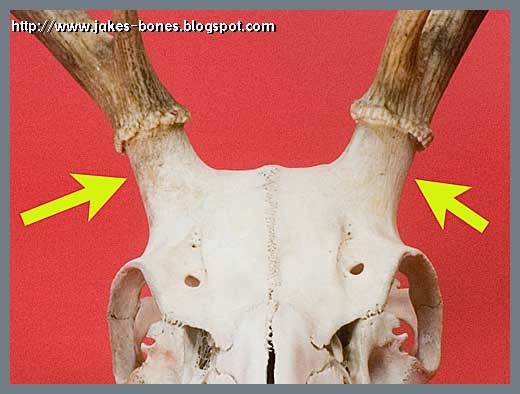As promised in the last blog- let’s talk facts and fiction
in the antler world.
Fact: A bucks
antlers are the fastest growing tissue in the animal kingdom! At the peak of their growth they can
add ½” a day.
Fiction: You can
tell the age of a buck by the number of points on its antlers.
No, the size of the rack tells you more about the nutrition
of the animal; whether it weathered a hard winter or not. The better the diet; the larger the
rack.
To accurately age a deer, you would take a slice of its
tooth (something a live deer is not going to be up for!) and have an expert
count the “rings”, it’s annual growth, under a microscope.
Fact: The velvet
that covers the antlers as they grow through spring and summer is skin that is
rich with blood vessels. When
testosterone begins to increase at the end of summer, it is a signal for the
blood flow to stop. The antlers, which are bone, start to harden and the
“velvet” is rubbed off.
Fiction: Once the velvet is rubbed off, they will
stop scraping your trees. NOT!
They continue to rub their antlers against the trees to help strengthen
their neck muscles for the upcoming territorial challenges. My poor trees always look like they
have been through a war by falls end but so far it hasn’t out and out killed
them.
Fact: Bucks must be
careful of their antlers in summer during their growth. Any hard bumps could
leave them deformed for the rest of that year to say nothing of the possibility
of bleeding. Tip toeing through
the junipers must be their summer gait.
Fact: A really well
fed, young buck, like the ones in our neighborhood, can sport a decent rack
even before their 4th birthday. Deer continue to grow until they are 4 so most of their
nutrition goes into gaining skeletal mass. However, if you live in an area
where we all fall prey to those liquid eyes, then the young stud gets extra
calories to grow some decent antlers.
Fact: If you find a
deer skull where the deer died “with his antlers off,” rather than “with his
boots on”, you can still tell male from female. The male skull has bony outgrowths called pedicels that the
antler grows out from and a doe skull won’t have these. If you want to be “uber” nature
detective; the larger the pedicles the larger the antlers and, until it died,
it was a well-fed deer.
Fact: Antlers are shed between Dec-March with the
healthiest deer shedding their antlers later in the season.
Fiction: The terms
horns and antlers are interchangeable. No, a horn is bone that is a growing part of the animal’s
body (think cows, rhinoceros, antelope etc) and is never shed whereas the
antlers are shed once a year.
Fact: We have heard
enough facts Pat! Let us get on with our lives!
OK, me too. I leave in 36 hrs for a 5-week sojourn to the
Northeast. The one-legged-
naturalist gimps north to her ancestral hunting grounds! In true, pick-the-worst-possible
time-to-die form, my computer expired last weekend. I am thankful for a very old Apple that is doing it’s best,
but if these blogs fall off for a while you will know why.
Wishing you all the best in this waning summer. Hopefully I
will find a way to blog from the road. There will be much beauty to be seen,
dear friends to be met and a family all together, to explore Ann of Avonlea
land. What could be grander?









Once again I learned a whole lot about deer. I erroneously thought the deer's age was related to the points. Now I know the rack size is determined by nutrition. No wonder those deer in the corn fields look so big with the huge racks. Thanks for your hard work preparing these interesting blogs. JKJ
ReplyDeletePat, I too learned some fiction I had heard differs from fact...good things to know. Thank you! Praying for Traveling Mercies for you on the road and as you visit family and friends. Hope you can send us some photographs of the beautiful East Coast. jep
ReplyDelete